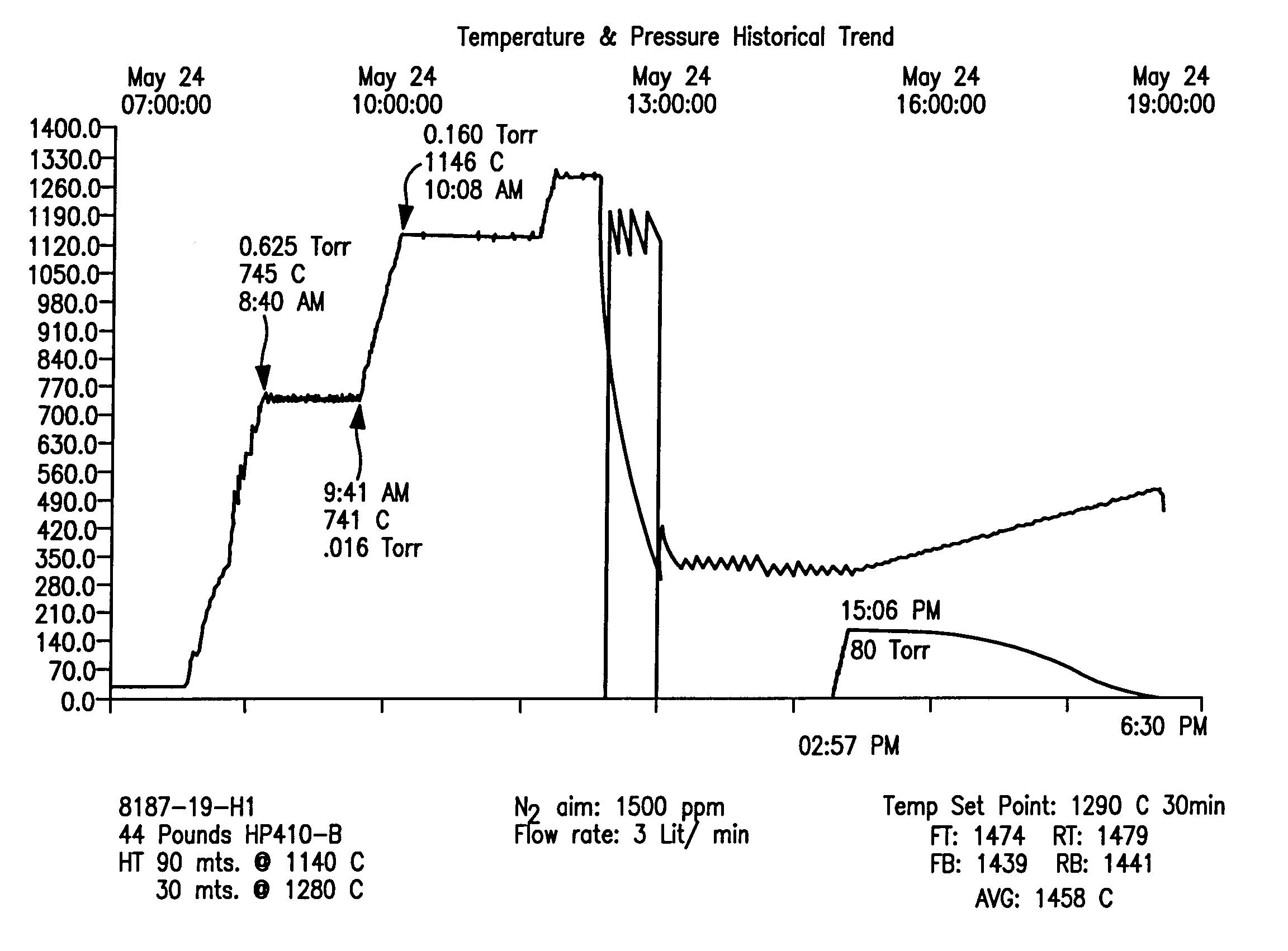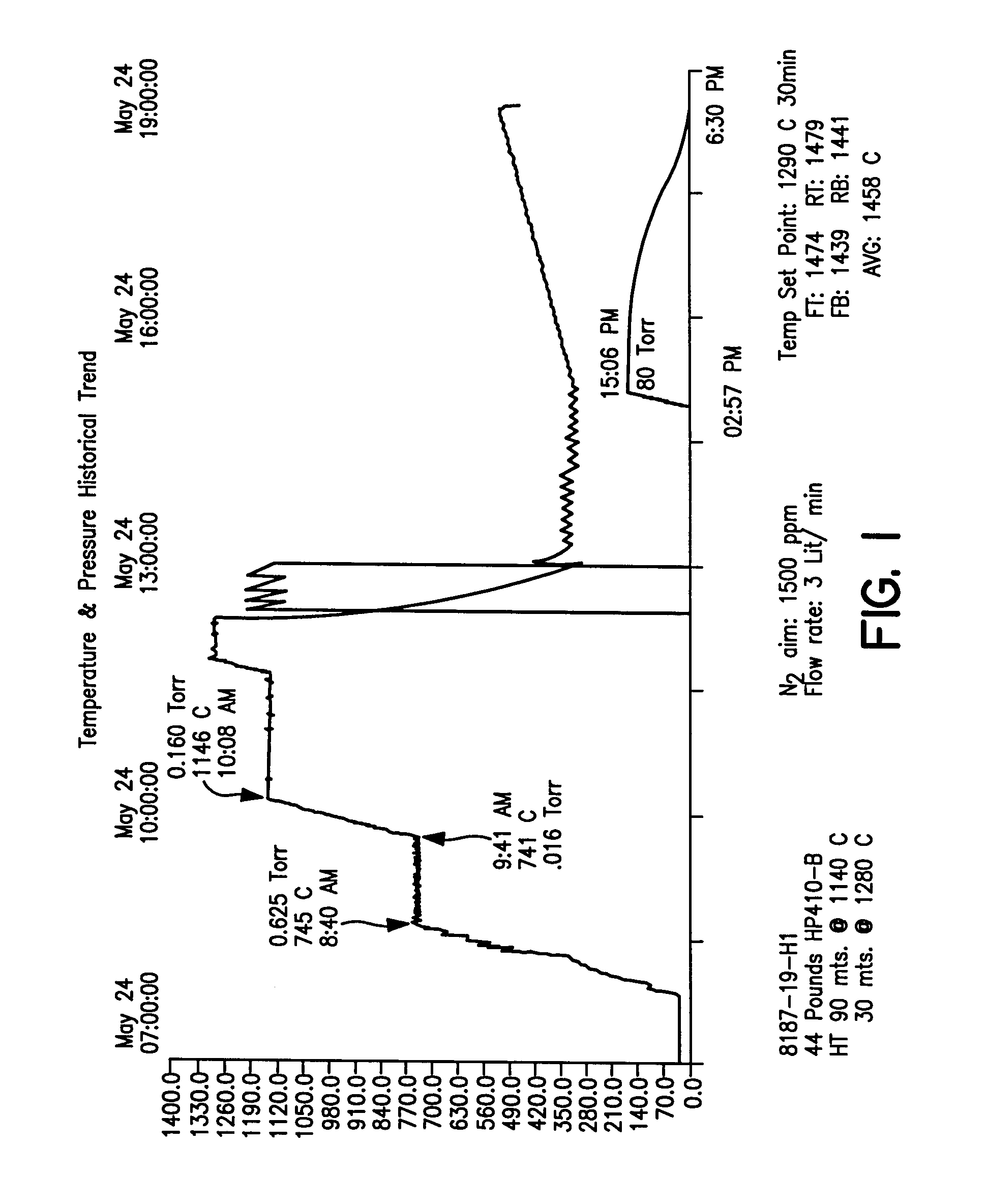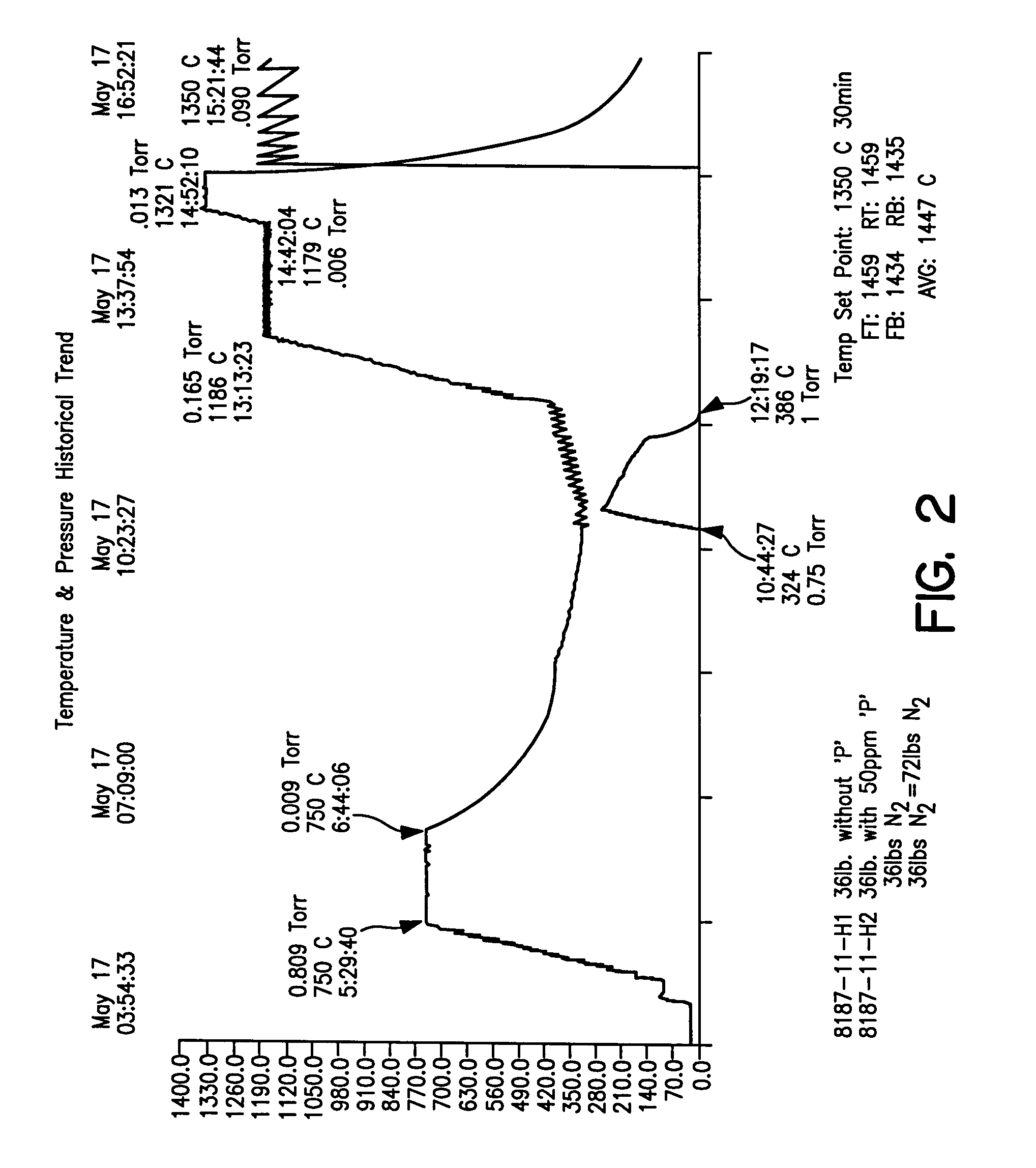Nitrided valve metals and processes for making the same
a technology of nitrided valve metals and valve metals, which is applied in the direction of metal-working apparatus, metallic material coating process, solid-state diffusion coating, etc., can solve the problem of lack of uniform distribution of nitrogen in valve metals
- Summary
- Abstract
- Description
- Claims
- Application Information
AI Technical Summary
Benefits of technology
Problems solved by technology
Method used
Image
Examples
example 1
44 pounds of tantalum basic lot powder having the characteristics set forth in Table 1 were used. The basic lot tantalum powder was introduced into a furnace and placed under vacuum. A hydrogen degassing procedure was conducted by raising the temperature of the basic lot powder to about 745.degree. C. for one hour, and during this time the increase in pressure resulting from the hydrogen release was vented out using a vacuum. Thereafter, under vacuum, the basic lot powder temperature was further increased to about 1146.degree. C. for about 60 minutes and then the temperature of the basic lot powder was raised to about 1458.degree. C. for 30 minutes and then the temperature was reduced to about 350.degree. C. Argon gas was introduced once the furnace cooled to about 1,000.degree. C. to aid in the cooling process. Once this lower temperature was reached, the argon gas was removed and nitrogen gas was introduced into the vacuum by pumping out and replacing the argon with nitrogen gas a...
example 2
A basic lot tantalum powder (72 lbs.-36 lbs. of this tantalum was doped with 50 ppm P) similar to that used in Example 1 was subjected to a heat treatment like in Example 1, wherein the basic lot powder was subjected to a hydrogen degassing procedure by raising the temperature of the basic lot powder to about 750.degree. C. for about 1 hour and 15 minutes. During this time, the release of hydrogen gas was vented under vacuum. Once the vacuum level reaches 10 microns or lower, the temperature of the basic lot powder was then allowed to cool down to about 350.degree. C. wherein about 80 Torr of nitrogen gas was introduced into the furnace. Like in Example 1, the nitrogen gas was essentially fully absorbed by the tantalum powder and there was a temperature increase during this time of about 60.degree. C. Once the nitriding was finished, the furnace chamber was evacuated to 10 microns or less and then the temperature of the basic lot powder was then raised to about 1186.degree. C. for a...
example 3
The powders from Examples 1 and 2 were then processed as follows:
Heat treated material which was in the form of cakes was crushed and screened using 70 mesh (US Sieve) screen. The -70 mesh powder was blended with magnesium. Magnesium content was 0.75% by weight. Magnesium blended tantalum powder was deoxidized by reacting at 850C. This deoxidation step was conducted to lower the oxygen content of the tantalum powder to reasonable level. The deoxidized tantalum powder was then treated with nitric acid, hydrofluoric acid and deionized water to remove the residual magnesium and the magnesium oxide generated during the deoxidation process. Acid treated powder was further rinsed with deionized water until a conductivity of less than 10 micromhos / cm was attained in the DI water. The rinsed tantalum powder was dried using a vacuum dryer. A representative sample of the dried powder was taken and analyzed for physical, chemical, and electrical properties of the powder. The results are shown ...
PUM
| Property | Measurement | Unit |
|---|---|---|
| Density | aaaaa | aaaaa |
| pore sizes | aaaaa | aaaaa |
| size | aaaaa | aaaaa |
Abstract
Description
Claims
Application Information
 Login to View More
Login to View More - R&D
- Intellectual Property
- Life Sciences
- Materials
- Tech Scout
- Unparalleled Data Quality
- Higher Quality Content
- 60% Fewer Hallucinations
Browse by: Latest US Patents, China's latest patents, Technical Efficacy Thesaurus, Application Domain, Technology Topic, Popular Technical Reports.
© 2025 PatSnap. All rights reserved.Legal|Privacy policy|Modern Slavery Act Transparency Statement|Sitemap|About US| Contact US: help@patsnap.com



